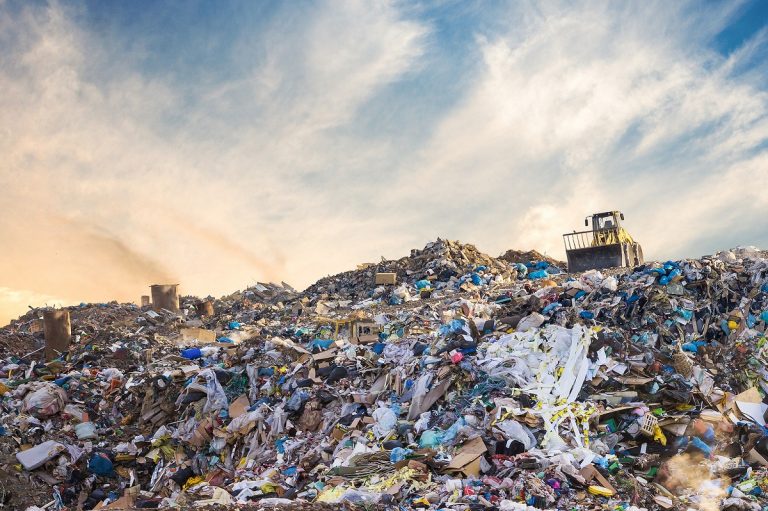Landfills are places where trash and other things are dumped to cover the ground with a new layer. There are two kinds of landfills: sanitary dumps, which are controlled, and garbage dumps, which are not. Landfills are a modern way to get rid of trash. They are made up of many layers. The bottom layer is usually a slab of something that doesn’t let water through, like clay.
This keeps liquids from getting into the water table. Soil is put on top as a liner to stop the spread of contaminants. The top layer is something that lets water through, like gravel. This lets air in but doesn’t let it out. This method lets liquid evaporate, which makes the waste smaller. This method is called the landfill method.
How landfill have changed over time.
From pits and dumps, landfills have become what they are today. Modern landfills are intended to be secure for everyone. They are lined with clay, plastic, and concrete to keep harmful substances from leaching into the environment. Most modern landfills are also checked for harmful gases and liquids that might leak out of the ground. People still use landfills a lot to get rid of trash. They have, however, changed a lot over time.
Certain landfill in Ohio
Franklin County Landfills
In Franklin County, OH, landfills are places where trash is dumped and buried under layers of soil. The US Environmental Protection Agency and the Ohio Environmental Agencies are in charge of regulating and issuing permits for Franklin County dumps, landfills, and sanitary landfills. Ohio law says how it should look, how it should work, and how much trash it can hold.
Erie County Landfill
The Erie County Landfill may be found in Huron, Ohio at 10102 Hoover Road. They take recyclables, non-flammable asbestos, construction and demolition debris, contaminated soil, dry industrial waste, and municipal solid waste.
Celina Landfill
The Celina Landfill is a place in Celina, Ohio, where trash and garbage are buried under soil layers or other wrap materials. Landfills, dump sites, and trash dumps in Celina are controlled by both the EPA and the environmental departments of the state of Ohio. Ohio is also in charge of giving permits to places where trash can be thrown away. Permitting rules decide how the Celina Landfill looks, how it works, and what kinds of trash county residents can put in it.
The problem with landfills
Toxins
Many things that end up as trash have harmful chemicals in them. Over time, these toxins seep into the soil and groundwater and cause long-term damage to the environment. One good example is electronic waste. TVs, computers, and other electronic devices that end up in the trash contain a long list of dangerous chemicals, such as mercury, arsenic, cadmium, PVC, solvents, acids, and lead.
Leachate
Leachate is the liquid that forms in a landfill when trash breaks down and water filters through it. This liquid is very dangerous and can pollute the groundwater, waterways, and land.
Greenhouse gas
Organic waste, such as food scraps, is often compacted and covered when dumped in a landfill. In doing so, the oxygen is depleted, causing the breakdown of a substance in a process that does not require oxygen. In the end, this gives off methane, which is a greenhouse gas 25 times stronger than carbon dioxide.
The effects on climate change and global warming are very big. Methane, like other flammable gases, poses a threat when it accumulates to dangerous levels. Many of these problems can be solved by putting your food scraps and green waste in a compost bin. Aside from the money it costs, garbage that is buried in a landfill doesn’t break down very quickly, so it will still be a problem for people in the future.
How modern dumps are becoming more environmentally friendly
As you can see, the disease-filled dumps of the past are nothing like the ones we have now. Along with the things we’ve already talked about, the industry is also looking into other ways to make landfills cleaner, safer, and better for the environment. Read on to find out a few ways that landfills are becoming more environmentally friendly.

Places to drop off
Before trash gets to a landfill, it can be easy to reduce its environmental impact by sorting it into different places to be thrown away. For example, properly throwing away dangerous materials can make sure they are thrown away safely and don’t touch other trash or people. Even organic waste can be helpful if it is split up in the right way.
Like food and greens, this kind of trash gives off a lot of gases and smells into the air. Landfills can do their part by having a separate area where people can leave green trash. The EPA also says that home composting is a good way for people to help.
From Garbage to Fuel
As we’ve already said, some landfills use the gas that is made there to make electricity. This helps us use less oil and other fossil fuels. Here are three of the most common ways that energy from landfill gas is changed and used.
- Electricity: Power plants near or at the landfill use gas as fuel to make electricity.
- Alternative fuel: Gas is moved to a factory or business and used instead of or in addition to fossil fuels.
- Gas: Gas is filtered until it is the same quality as natural gas, and then it is sent to places where natural gas is usually used, like kitchen stoves.
